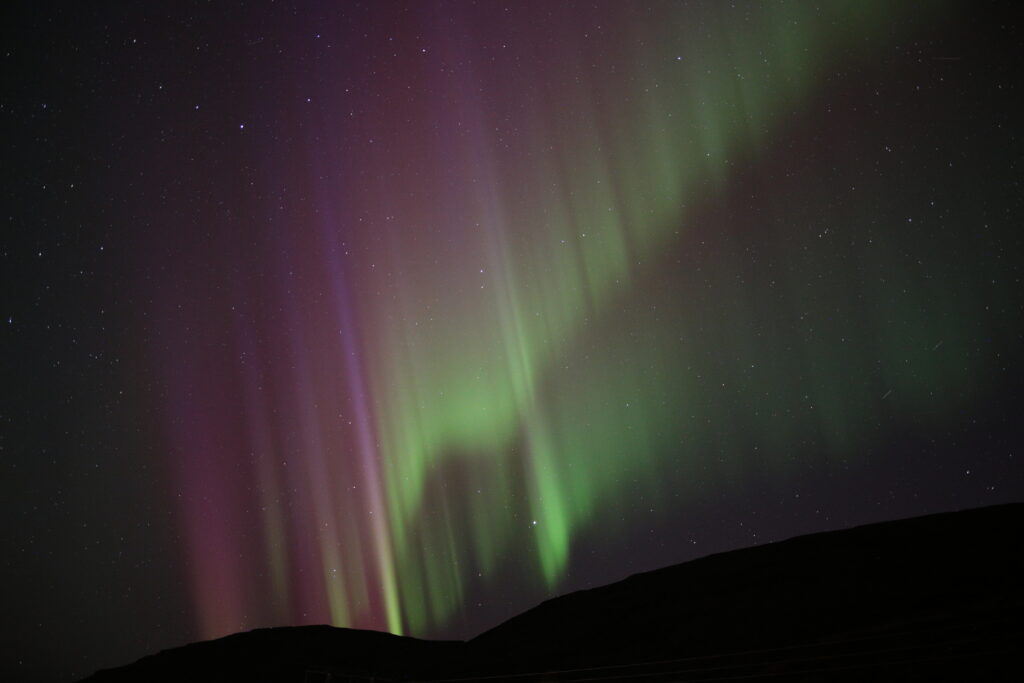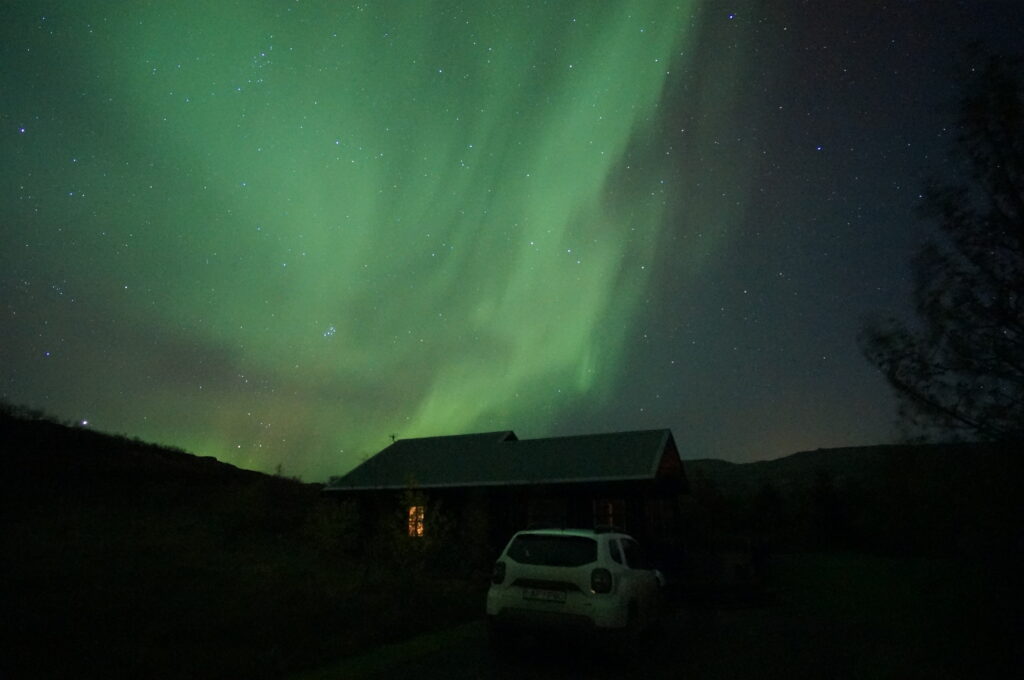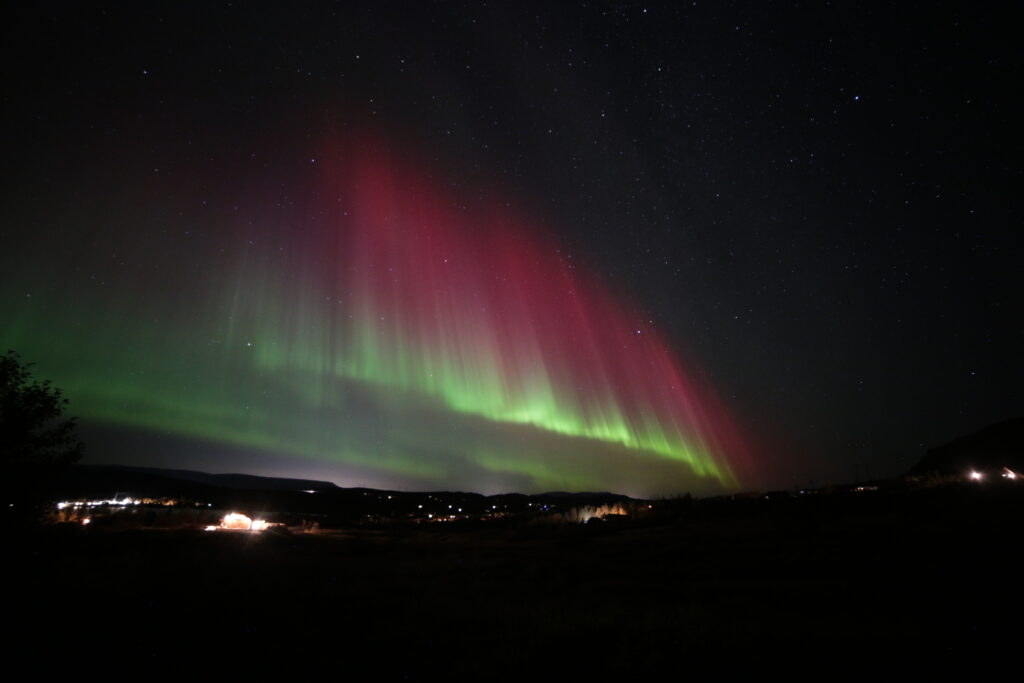A travelogue about the excursion to Iceland in September/October 2024
Thomas Grunge, Dr. Gerold Holtkamp and Dr. Achim Tegeler, October 16, 2024
All videos of this excursion can be found on our
kosmos-os Youtube channel @kosmos-os !
Three kosmos-os friends traveled to Iceland from 30.09 to 07.10.2024 in the hope of seeing the Northern Lights. That sounds simple. It is, if you consider some boundary conditions. Since Iceland is well developed for tourism, the actual trip was no problem. We, Gerold, Thomas G. and Achim, lived in a holiday home in the west by Lake Eyrarvatn. There you are sufficiently far away from Reykjavik's light pollution bell. In addition, there were only a few neighboring holiday homes, most of which were not occupied. We wanted to see the Northern Lights, but the star-studded night sky alone was outstanding.
The Milky Way could be seen directly above our heads.

The weather in Iceland is less predictable than the observation conditions in Osnabrück because of the nearby Gulf Stream. We had hoped that at the beginning of October, clear days, but especially the nights, would still be in the majority. We were not disappointed. From 03.10. the sky was clear until the last night over Eyrarvatn – really crystal clear! Picture-perfect weather! Now only the sun had to contribute its part, i.e. an intense solar wind.
This year 2024, our sun is at the maximum activity of its eleven-year cycle. In the years around the maximum, there are not only many sunspots, but also very often active zones that emit plasma clouds. This means that the probability of auroras is significantly higher than in other years, because these plasma clouds can hit the Earth. They are deflected by the Earth's magnetic field along the magnetic field lines at the poles, where they collide with the air molecules that excite them to glow. In the weeks around the equinoxes, i.e. around March 21 and September 23, the probability of the occurrence of auroras is increased again, because during this time the angle between the solar wind magnetic field (interplanetary magnetic field) and the Earth's magnetic field is aligned in such a way that there is a stronger coupling, which leads to: that more solar particles can penetrate the Earth's atmosphere (Russell-McPherron effect [1]). The moon was also no problem. It was both in the new moon phase and mostly below the horizon. So our travel date was well chosen.
The sky was, as described above, perfect. Only the announced plasma cloud from the sun obviously needed more time than expected to arrive on Earth. But that didn't mean that we didn't see any auroras at all. It was just normal activity. The Northern Lights appeared north of us and were partly hidden by the nearby mountain. Nevertheless, we managed to get some promising shots.

We even had a particularly promising aurora forecast. From 03.10., strong to very strong auroral activity was predicted.


But the conditions got better from day to day. The sky became clearer and the sun more active.


On the last night before our departure, however, the aurora borealis became breathtakingly active. The sky overflowed with light and colors. Everything was in constant motion, coming into being and passing away. Often the glowing "curtains" built up directly above us and then wandered far south. North of us, there was hardly anything to see, an indication that it must be a particularly strong solar wind that directs the charged particles far south. This was confirmed in the following days.

From nightfall at 8:00 p.m. on 06.10. until only 3 hours before the departure at 06:00 in the morning, we withstood the icy temperatures. The sight was just too beautiful to sleep through.


We could not and did not want to tear ourselves away from the celestial spectacle.

Around 02:00 in the morning, the show turned into a pulsating, weaker aurora that covered the entire sky.
Every second, glowing clouds arose and passed. At that time we were looking for some sleep, because at 04:30 a.m. the alarm clock rang again – the plane did not wait
The still active aurora accompanied us on the drive to the airport until the increasing twilight ended this magnificent spectacle.
These were overwhelming sights for us and an all-round successful excursion to Iceland – imitation strongly recommended!

-> Weitere Beiträge zu Polarlichtern
____________________________________________________________________________
[1] Russell, C. T., and R. L. McPherron (1973), Semiannual variation of geomagnetic activity, J. Geophys. Res.,78,92–108
[2] https://www.swpc.noaa.gov/products/notifications-timeline